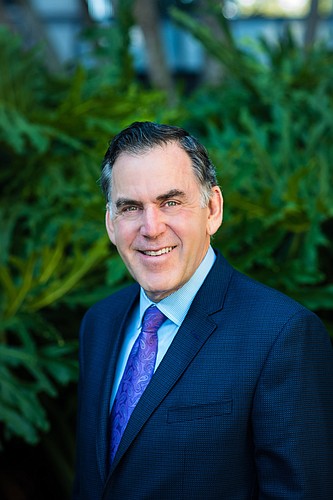- December 23, 2024
-
-
Loading

Loading

What will Tampa Bay be when it grows up?
That metaphorical question is the crux of the 2019 Tampa Bay Regional Competitiveness Report. The Tampa Bay Partnership, in collaboration with United Way Suncoast and the Community Foundation of Tampa Bay, published the report earlier this year — the second edition.
Both editions assess the region’s strengths and weaknesses across dozens of metrics, measured against 19 peer and competitive markets nationwide. The region goes north, south and east of Tampa: Citrus, Hernando, Hillsborough, Manatee, Pasco, Pinellas, Polk and Sarasota counties.
‘We all knew transportation was a major issue. (But) it was the data surrounding talent that took us all by surprise. We ranked at or near the bottom of almost every single talent indicator.’ Rick Homans, Tampa Bay Partnership
There are 4.7 million people in the region, the report shows, and officials project it will surpass 5 million by 2023. (The counties with the largest five-year growth projections are No. 1, Manatee, and behind it Hillsborough, far outpacing the six other counties in the region.) “Together, we’re a powerful economic market of significant size and scope,” says Partnership President and CEO Rick Homans, speaking in late February at a Bay Area Legislative Delegation meeting.
That kind of size and scope, in addressing the region’s future, is akin to spring training for baseball teams: possibilities and optimism abound — but issues, from previous years and under-addressed threats, lurk in the background.
“The energy in Tampa Bay is palpable, with near-daily announcements of business expansions, community investments and national awards and accolades,” states the 73-page competitiveness report. Yet, it adds, “on a per-capita basis, our gross regional product once again ranks last, and when adjusted for inflation, actually decreased in the past year.”
The report is broken down into five categories, and highlights of each one includes:
Economic vitality: The region trails its peers in several key metrics, including average wages. In some ways it’s a Florida thing. The Sunshine State takes four of the bottom five spots in average wages. Only Orlando, with an average wage of $45,674, is lower than Tampa, with an average annual wage of $46,619. It’s not much better on median household income, where Tampa is dead last, at $52,274.
Innovation: Homans notes the recent success at the University of South Florida, now a preeminent institution. While several areas have more patents per 100,000 people and have larger pools of funding for colleges, Homans notes “the trend line is moving in the right direction.”
Infrastructure: The region ranks last in both transit ridership per capita, at 9.93, and transit vehicle revenue miles per capita, at 9.53. Seattle, Baltimore and Denver are among cities threefold ahead of the Tampa region in public transit.
Talent: “We all knew transportation was a major issue,” Homans says, but “it was the data surrounding talent that took us all by surprise. We ranked at or near the bottom of almost every single talent indicator.” Data measured in this category includes high school graduation rates; percentage of 16- to 24-year-olds neither in school nor employed; and working age residents with college degrees.
Civic quality: Spending by arts organizations and audiences, the report shows, supports more than 32,000 jobs and more than $750 million in household income. The North Port-Bradenton-Sarasota MSA, the report adds, has 5.16 such cultural and recreational establishments per 10,000 residents — highest in the region.
All told, Homans says, the data “hits a lot of high notes … regarding the attractiveness of our community to businesses and residents alike. But a closer look shows there are some cracks in the foundation that, if not addressed could jeopardize our long-term prosperity.”